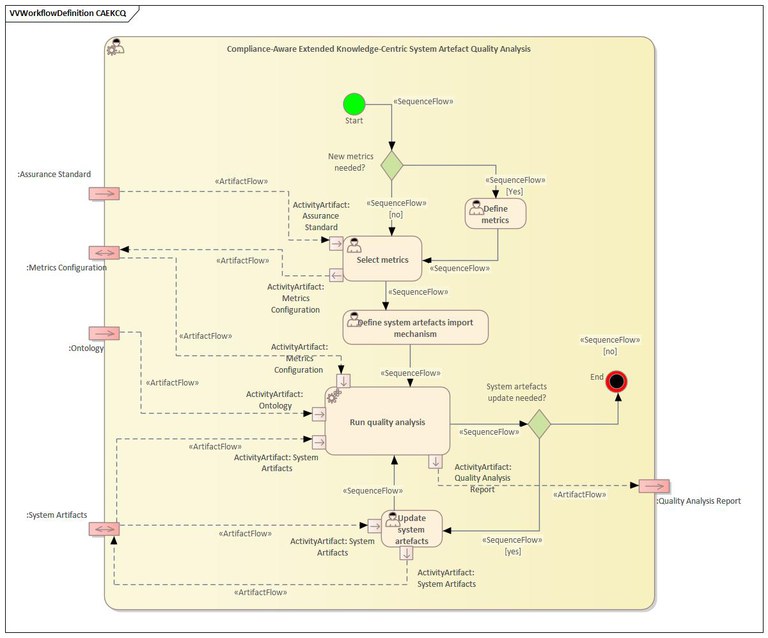Compliance-Aware Extended Knowledge-Centric System Artefact Quality Analysis
Knowledge-centric system artefact quality analysis is a method that exploits knowledge bases (ontologies) for quantitative artefact quality analysis, e.g., to determine if a given requirement contains valid terms or has been correctly specified according to some pattern. This method has been improved by making it compliance-aware and extending it.
Link with compliance needs. A process has been defined to systematically represent information and compliance needs from standards by ontologies, e.g., from DO-178C, and to later exploit such information to follow the standards and assess the compliance with them. Among its main features, the process considers:
- Inclusion of the terminology specific to a standard (e.g., item)
- Definition of semantic information for aspects such as the concepts of a standard (e.g., software element concepts), the types of possible relationships between system artefacts (e.g., for the fact that a test case validates some requirements), and the relationship between general concepts and standard-specific ones (e.g., between requirements and high-level requirement)
- Provision of specification patterns in accordance with the terminology and semantic information of a standard (e.g., to specify that a requirement refers to a software element)
- Mapping of general quality analysis metrics to the concrete compliance needs of a standard (e.g., for requirements consistency assessment)
- Development of a checklist for compliance assessment (e.g., to indicate whether it is judged that high-level requirements comply with system requirements)
Extended model quality analysis. The improvements in this area have strongly focused on the definition of means for quality analysis when using the Arcadia method and the Capella tool for model-based systems engineering [CAEKCQ1]. Arcadia and Capella define a process and means for requirements analysis and design for systems, hardware, and software, considering different views. The improvement has considered:
- The mapping between Arcadia/Capella diagrams and the data schema used for Knowledge-centric system artefact quality analysis
- How the diagrams can be extended for detailed quality analysis
- The existing means for quality analysis that can be used off the self on Arcadia/Capella diagrams
- New means that could be used
- How the development of Arcadia/Capella diagrams can benefit from on-the-fly quality analysis and how such an analysis could be enabled
Some improvements have already been referred to in a publication [CAEKCQ2].

- Compliance-aware system artefact quality analysis
- New quality analysis possibilities
- There exist many types of system artefacts and the analysis of some is not supported yet
- No empirical evidence of cost-effectiveness
[CAEKCQ1] Eclipse: Capella (online) https://www.eclipse.org/capella/
[CAEKCQ2] de la Vara, J.L., Morote, J.: A Proposal for Model-Based Reliability-Oriented System Design in Industry. 21st IEEE International Conference on Software Quality, Reliability, and Security (QRS 2021)
